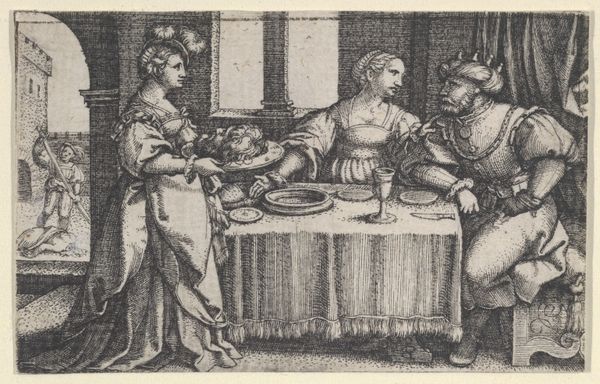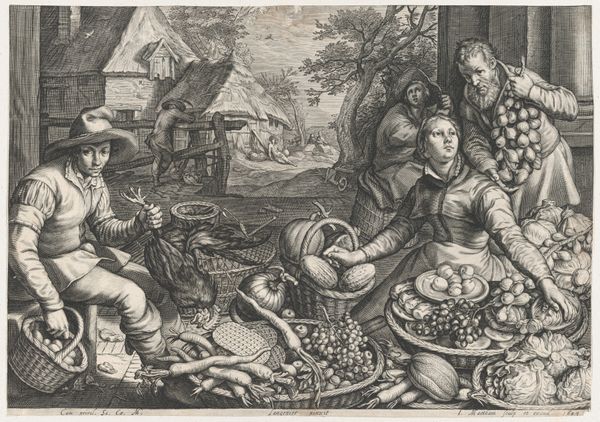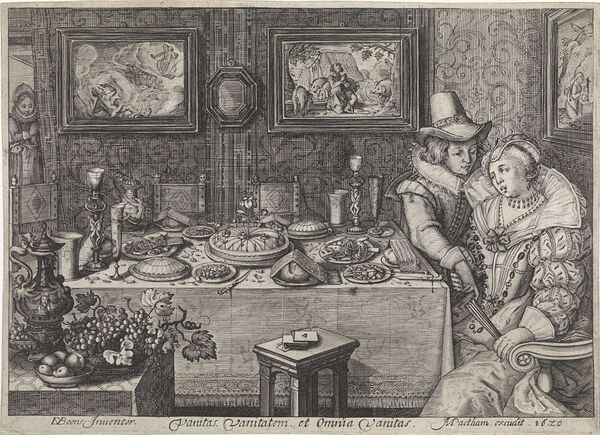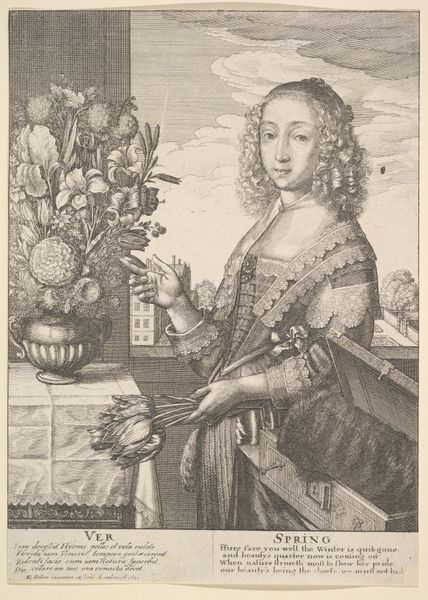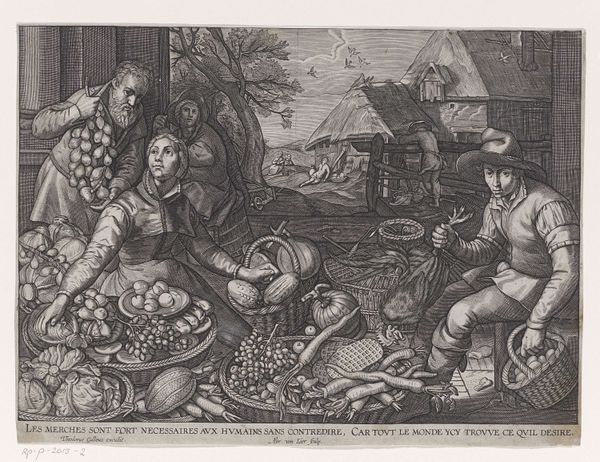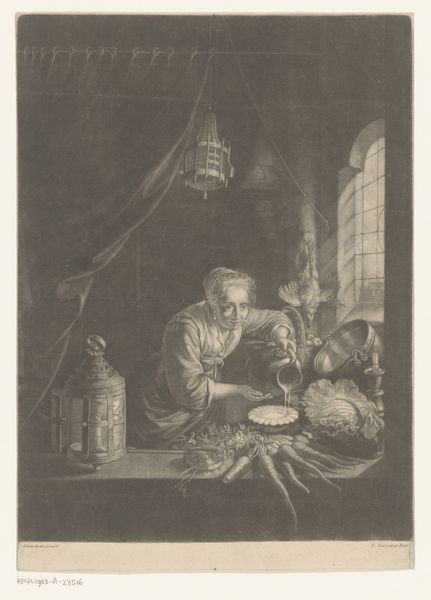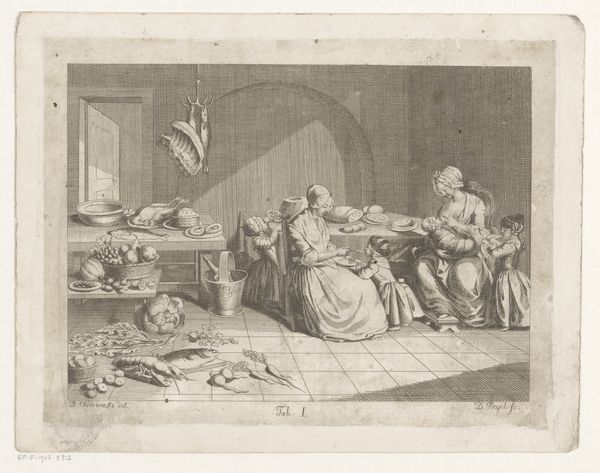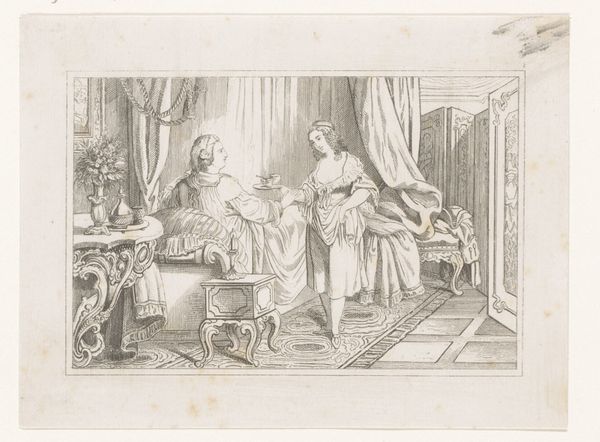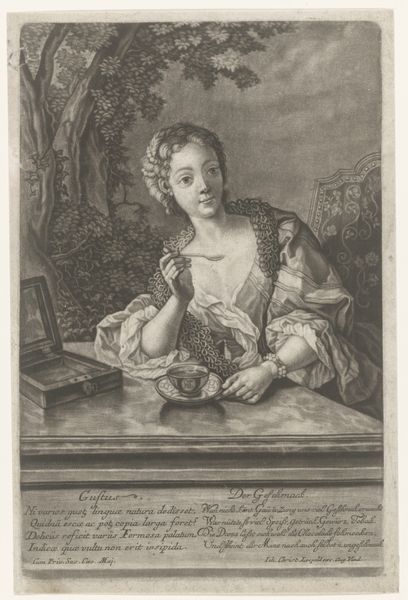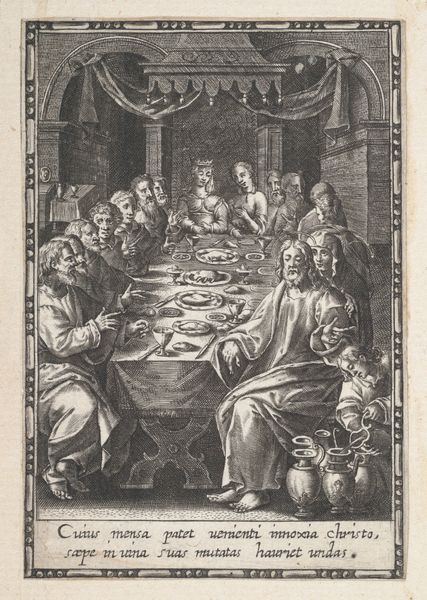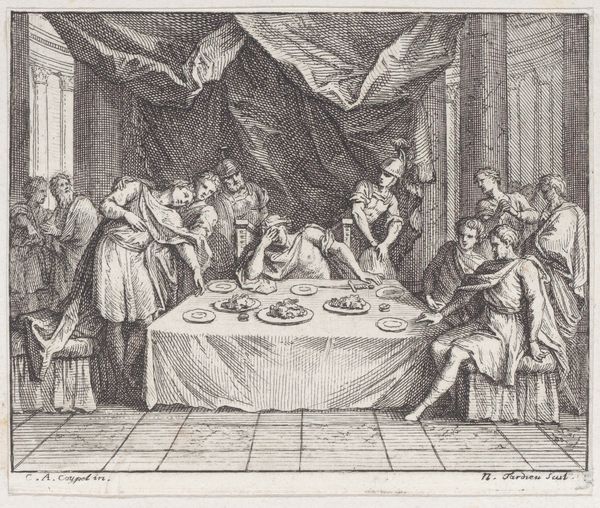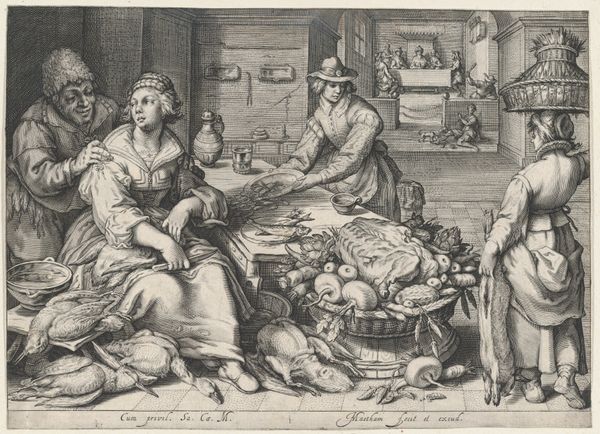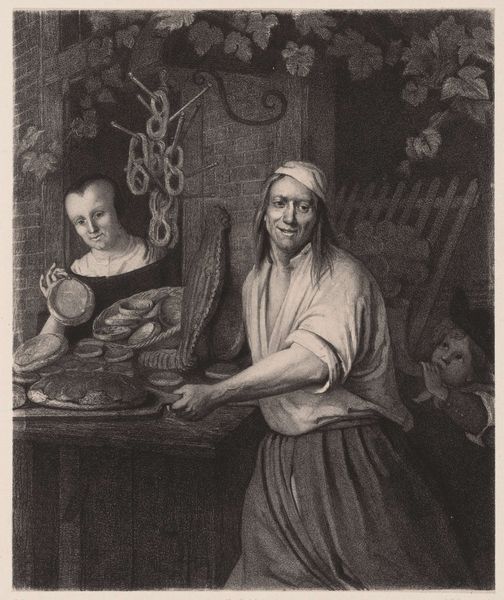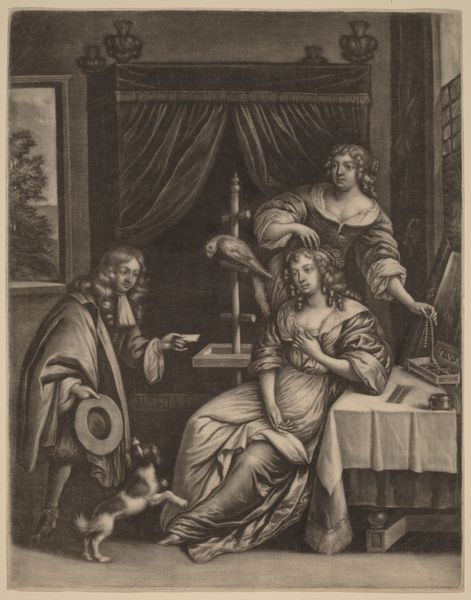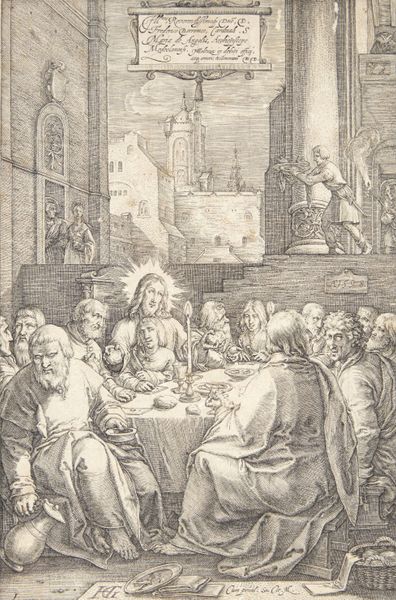
painting, oil-paint
#
portrait
#
baroque
#
painting
#
oil-paint
#
figuration
#
oil painting
#
fruit
#
genre-painting
Dimensions: support height 23.2 cm, support width 30.5 cm, outer size depth 3.5 cm
Copyright: Rijks Museum: Open Domain
Editor: Here we have "Servant by a Larder Table," painted sometime between 1635 and 1645 by an anonymous artist. It's an oil painting featuring a woman with a table laden with food. I'm struck by the contrast between her almost plain attire and the opulence of the still life. What do you make of this composition? Curator: This painting gives us insight into the socio-economic context of the time. While seemingly a simple genre scene, it's carefully constructed to communicate status. The larder, overflowing with delicacies like lobster and various fruits, speaks volumes about the household's wealth. Notice how the servant is positioned – present but not central. Editor: That's a great point. She's almost secondary to the display of food. Does that tell us anything about the role of servants in art, or in society in general? Curator: Absolutely. Consider how paintings like this functioned within the art market. They weren't just decorations. They were commodities reflecting and reinforcing societal hierarchies. Genre scenes became popular, depicting everyday life, but they also subtly promoted existing power structures. Is she perhaps an allegory? Consider the fruit. What might these items symbolize at the time? Editor: Well, the presence of exotic fruits would signal access to global trade routes. And isn't there often symbolism connected to particular fruits like temptation with apples, for instance? Curator: Precisely! Now, let's also think about who commissioned and viewed paintings like this. It would likely be a member of the upper class, reinforcing their own self-image and justifying their place in society through art. What happens to the reception of the piece when it goes from its intended setting in the patron’s residence, to the walls of the museum for the masses? Editor: I see. The museum flattens that hierarchy, even as it displays the work. Fascinating. It gives me a lot to think about! Curator: Indeed, and examining those historical layers adds depth to how we understand and experience this seemingly simple painting.
Comments
No comments
Be the first to comment and join the conversation on the ultimate creative platform.
